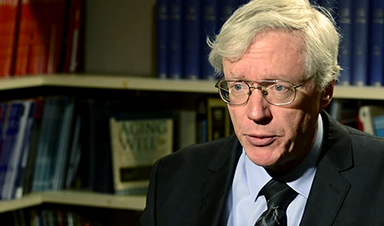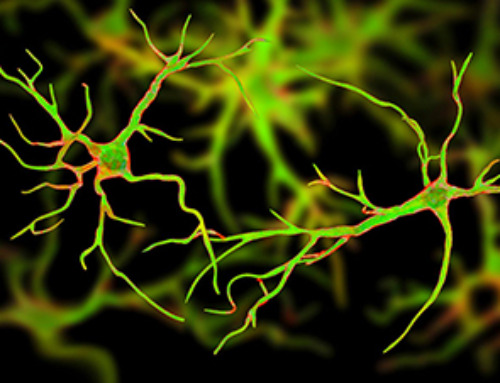A red-hot anti-aging strategy quietly passed its first test earlier this year after 14 volunteers took drugs meant to kill off old, toxic cells in their bodies.
The small study in people with lung disease, reported in January, is being billed as the first attempt at “senolytics,” or employing drugs to clear people’s bodies of aged, toxic cells. Some researchers think this strategy could eventually be employed in healthy people to delay aging.
“This gives us to some extent a green light to go on to larger trials,” says James Kirkland, a Mayo Clinic professor who helped lead the trial, carried out in clinics in Texas and at Wake Forest University starting in 2016.
Patients took two pills that Kirkland and his colleagues believed could selectively get rid of aged cells: the leukemia drug dasatinib and a supplement called quercetin.
It is early days for drugs meant to slow aging, and some breathed a sigh of relief that patients in this first-of-a-kind study didn’t suffer serious side-effects from the drugs. “My worry is we should not leap into this too fast, because if there’s a mistake or something we don’t understand, it could set the field back,” says Judith Campisi, a professor at the Buck Institute for Research on Aging in Novato, California.
This was a pilot trial—not even in the first phase of a three-part sequence of trials needed to win approval by the US Food and Drug Administration. So, officially, it showed nothing about aging at all.
All 14 patients suffered from a fatal, hard-to-treat lung condition called idiopathic pulmonary fibrosis, which explains why they were willing to participate in the experiment. The doctors found that nine doses of the two pills over three weeks did seem to improve patients’ ability to walk a bit farther in the same amount of time, and several other measures of well-being.
A bubble of commercial enthusiasm has been building around the idea that aging could be postponed, or its effects tempered, using drug treatments. A company called Unity Biotechnology of Brisbane, California, is developing two senolytic drugs, the first of which is in a phase 1 clinical trial for osteoarthritis—it’s being injected into people’s knees. Campisi is a cofounder of Unity, and Kirkland also holds shares in the public company, which is currently worth about half a billion dollars.
Image Credit: James Kirkland, Mayo Clinic professor. Mayo Clinic
News This Week
Multifunctional Nanogels: A Breakthrough in Antibacterial Strategies
Antibiotic resistance is a growing concern - from human health to crop survival. A new study successfully uses nanogels to target and almost entirely inhibit the bacteria P. Aeruginosa. Recently published in Angewandte Chemie, the study [...]
Nanoflowers rejuvenate old and damaged human cells by replacing their mitochondria
Biomedical researchers at Texas A&M University may have discovered a way to stop or even reverse the decline of cellular energy production—a finding that could have revolutionary effects across medicine. Dr. Akhilesh K. Gaharwar [...]
The Stunning New Push to Protect the Invisible 99% of Life
Scientists worldwide have joined forces to build the first-ever roadmap for conserving Earth’s vast invisible majority—microbes. Their new IUCN Specialist Group reframes conservation by elevating microbial life to the same urgency as plants and [...]
Scientists Find a Way to Help the Brain Clear Alzheimer’s Plaques Naturally
Scientists have discovered that the brain may have a built-in way to fight Alzheimer’s. By activating a protein called Sox9, researchers were able to switch on star-shaped brain cells known as astrocytes and turn them into [...]
Vision can be rebooted in adults with amblyopia, study suggests
Temporarily anesthetizing the retina briefly reverts the activity of the visual system to that observed in early development and enables growth of responses to the amblyopic eye, new research shows. In the common vision [...]
Ultrasound-activated Nanoparticles Kill Liver Cancer and Activate Immune System
A new ultrasound-guided nanotherapy wipes out liver tumors while training the immune system to keep them from coming back. The study, published in Nano Today, introduces a biodegradable nanoparticle system that combines sonodynamic therapy and cell [...]
Magnetic nanoparticles that successfully navigate complex blood vessels may be ready for clinical trials
Every year, 12 million people worldwide suffer a stroke; many die or are permanently impaired. Currently, drugs are administered to dissolve the thrombus that blocks the blood vessel. These drugs spread throughout the entire [...]
Reviving Exhausted T Cells Sparks Powerful Cancer Tumor Elimination
Scientists have discovered how tumors secretly drain the energy from T cells—the immune system’s main cancer fighters—and how blocking that process can bring them back to life. The team found that cancer cells use [...]
Very low LDL-cholesterol correlates to fewer heart problems after stroke
Brigham and Women's Hospital's TIMI Study Group reports that in patients with prior ischemic stroke, very low achieved LDL-cholesterol correlated with fewer major adverse cardiovascular events and fewer recurrent strokes, without an apparent increase [...]
“Great Unified Microscope” Reveals Hidden Micro and Nano Worlds Inside Living Cells
University of Tokyo researchers have created a powerful new microscope that captures both forward- and back-scattered light at once, letting scientists see everything from large cell structures to tiny nanoscale particles in a single shot. Researchers [...]
Breakthrough Alzheimer’s Drug Has a Hidden Problem
Researchers in Japan found that although the Alzheimer’s drug lecanemab successfully removes amyloid plaques from the brain, it does not restore the brain’s waste-clearing system within the first few months of treatment. The study suggests that [...]
Concerning New Research Reveals Colon Cancer Is Skyrocketing in Adults Under 50
Colorectal cancer is striking younger adults at alarming rates, driven by lifestyle and genetic factors. Colorectal cancer (CRC) develops when abnormal cells grow uncontrollably in the colon or rectum, forming tumors that can eventually [...]
Scientists Discover a Natural, Non-Addictive Way To Block Pain That Could Replace Opioids
Scientists have discovered that the body can naturally dull pain through its own localized “benzodiazepine-like” peptides. A groundbreaking study led by a University of Leeds scientist has unveiled new insights into how the body manages pain, [...]
GLP-1 Drugs Like Ozempic Work, but New Research Reveals a Major Catch
Three new Cochrane reviews find evidence that GLP-1 drugs lead to clinically meaningful weight loss, though industry-funded studies raise concerns. Three new reviews from Cochrane have found that GLP-1 medications can lead to significant [...]
How a Palm-Sized Laser Could Change Medicine and Manufacturing
Researchers have developed an innovative and versatile system designed for a new generation of short-pulse lasers. Lasers that produce extremely short bursts of light are known for their remarkable precision, making them indispensable tools [...]
New nanoparticles stimulate the immune system to attack ovarian tumors
Cancer immunotherapy, which uses drugs that stimulate the body’s immune cells to attack tumors, is a promising approach to treating many types of cancer. However, it doesn’t work well for some tumors, including ovarian [...]






















Leave A Comment